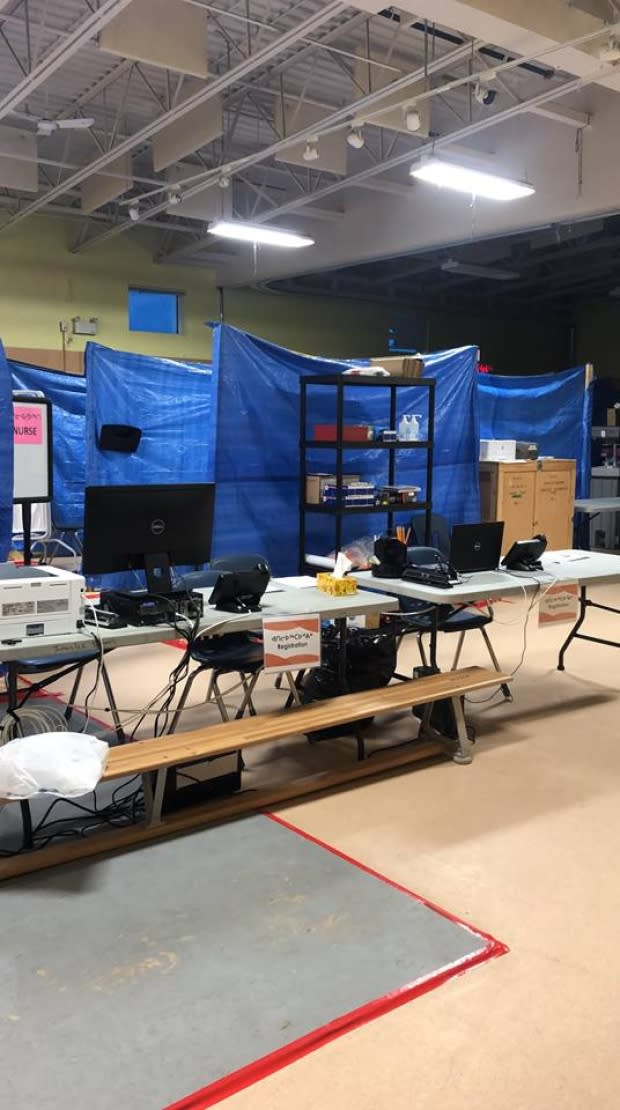Most Whale Cove residents tested for tuberculosis in 2nd community-wide clinic
The majority of residents in Whale Cove, Nunavut, have now been screened for tuberculosis and the health department is picking up best practices at each clinic it holds.
In the community of about 450 people, 80 per cent completed the full screening process and 90 per cent showed up for some form of testing, according to the government of Nunavut's acting chief medical officer of health.
"It's not ideal," said Michael Patterson.
"We would like to find ways to increase that number because it does leave a body of people who've not been tested and there's almost certainly some form of TB remaining in the community that remains undiagnosed and untreated."
There's almost certainly some form of TB remaining in the community that remains undiagnosed and untreated. - Michael Patterson, acting chief medical officer of health
The health department held its first mobile emergency clinic in February in Qikiqtarjuaq, where it was estimated about 10 per cent of people were infected. It said if the approach was successful, the clinic would be packed up and rolled out in the remaining 16 Nunavut communities.
The department says it won't release final numbers of active and latent cases of tuberculosis in Whale Cove for privacy reasons. Some test results have also not yet been completed.
While preliminary results from tuberculosis sputum tests — coughed-up spit — are available within a few days, the definitive bacterial culture results can take seven weeks, so will not be finalized until mid-January.

Unnecessary testing reduced
Tuberculosis is an infectious disease caused by bacteria that spread through the air when someone coughs, sneezes or even talks, according to Health Canada. It usually attacks the lungs, but can also affect the lymph nodes, kidneys, urinary tract and bones.
The screening is voluntary, so the Department of Health is finding ways to entice people to take part.
The department learned in Qikiqtarjuaq that some tests were largely unnecessary, including a routine physical and sputum testing for children under 10.
Streamlining the process in Whale Cove meant shorter screening times. While it took a family in Qikiqtarjuaq three to four hours to make it through testing, the Whale Cove clinic had it down to two hours.
The clinic had an information session and feast to start off the screening, which ran from Oct. 22 until Nov. 26.
Shorter hours at the clinic meant less overtime for staff. That, along with reusing some equipment from Qikiqtarjuaq, means the cost will be less in Whale Cove — though Patterson estimates it was still around $1 million to run.
No plan has been announced for screenings in 2019, but Patterson said the government is working to support Nunavut Tunngavik Inc. to develop its regional plan for the Inuit Tuberculosis Elimination Framework, which is expected by the end of March.
The federal government vowed earlier this year to cut tuberculosis cases by half in Inuit communities by 2025, with the goal of fully eliminating the disease by 2030.
Symptoms of tuberculosis can include a fever, sweating, loss of appetite, and coughing up phlegm or blood. It can lead to death if left untreated.
The germ can hang in the air for several hours, so tuberculosis spreads well in poorly ventilated, overcrowded homes, which are prevalent in Nunavut.

